Special Offerings for the 9 Forms of Navaratri Goddesses
The Sanskrit word “Navratri” means “nine nights” in English. These nine nights are celebrated with tremendous zeal and intensity by Indians all over the world. The ceremonial fasting, poojas, and adoption of a tranquil, meditative lifestyle are observed throughout these nine days of celebrations. The Divine and her nine incarnations are honored during this Hindu festival.
Special Offerings for the 9 Forms of Navaratri Goddesses -Hindus revere the nine various forms of Shakti or Durga on every one of these nine days. Special prayers and sacrifices are welcomed by the “Nav Durga” or “Nine Forms of Durga.” Every Hindu home emphasizes the importance of Nav Durga, notably during the Navratris when Devi descends from heaven to bestow her blessings on her devoted followers.
Table of Contents
Facts Regarding Maa Durga’s Mythological Incarnation
According to a tale, the lips of Mata Durga arose from the grandeur of Lord Shiva, the hairs from the splendor of Yamraj, the arms from God Vishnu, the breasts from the Moon, and the waist from Indra to release the Gods from the horror of the Demons. The thighs and calves were made by the glory of Varun, the navel (Umbilical Chord) by the splendor of Brahma, the foot by the splendor of the Sun, the fingers by the splendor of Kuber, the nose by the splendor of Agni, the teeth by Agni, and the eyebrows by Vayu. The Goddess Durga’s other bodily parts are developed in the same manner.
The nine forms of the Devi on each day of Navratri, along with the Bhog or prasad that is made especially for each.
Goddess Shailputri
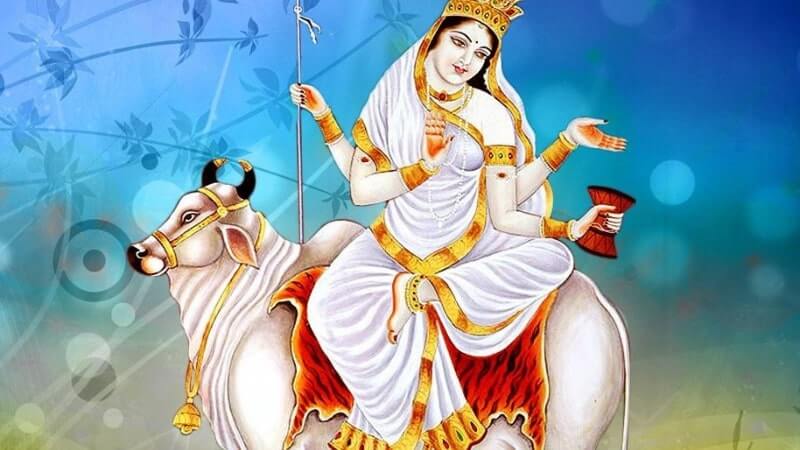
Goddess Shailputri is Durga’s first incarnation. She rides a bull named Nandi while wielding a Trishul and a lotus, according to the Vedas. According to the Shivpurana, Goddess Shailputri was given the name “Sati” when she was born to Daksha Prajapati in a past life. Since she was a little girl, Sati has been deeply dedicated to Lord Shiva, and she diligently pondered to conceive Deity Shiva as her husband.
She received the wished-for blessing from Lord Shiva, who also welcomed her as her spouse. Sati’s dad Daksha Prajapati did not approve of the relationship and humiliated Shiva by not calling him to one of his special meetings. Sati set herself on fire and gave her life in dedication to her husband after becoming enraged at the treatment he had received. Sati was given the name Shailputri after she gave birth to her next child, who was a daughter of the Himalayas, the Lord of the Mountains. Additionally, Sailputri is revered as Parvati or Hemvati. During the first day of Navratra, Shailputri is worshipped. Pure desi ghee is offered by worshippers at Shailputri’s feet. A pure ghee sacrifice is thought to grant the devotee a life without fear of illness and disease.
Also, read – Vital Life Lessons From Lord Ganesha
Goddess Brahmacharini
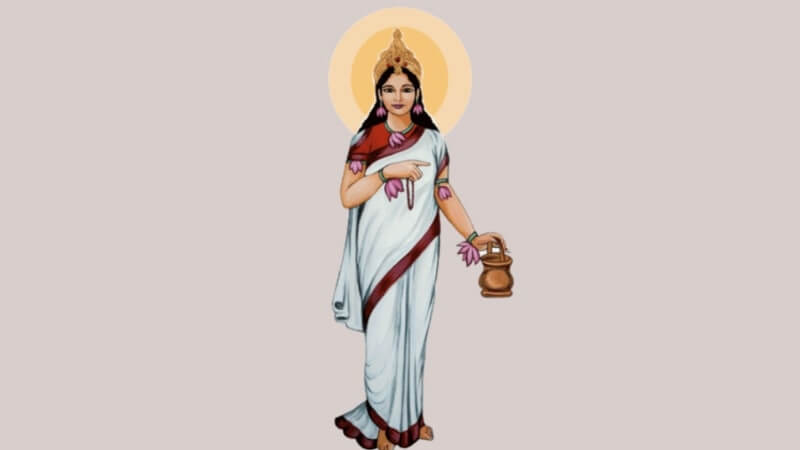
The goddess Brahmacharini is honored on the second day of Navratri. In Hindu texts, she is shown as a two-armed, white-clad monastic goddess clutching a Kamandalu and rudraksha mala. She is standing with the deepest commitment and piety. Her contemplative state is connected to the harsh penance Sati and Parvati undertook throughout their individual incarnations to win Lord Shiva’s favor as his cherished spouse. She also goes by the name Tapasyacharini. According to legend, Parvati was turned into a skeleton as she was engrossed in her intense concentration to appease Lord Shiva. All the devas and Gods, who were astounded by her respect, gave her the title of Bharahmacharini in recognition of her stern penance. It is known that worshipping this manifestation of Shakti brings forth the spirit of patience, sacrifice, integrity, and dignity. Simple meals and offerings are loved by Goddess Brahmacharini. Devotees offer the goddess Brahmacharini derivatives of sugar and fruits.
Also read – The Ancient Holy City of Vellore That Should Not Be Ignored
Goddess Chandraghanta
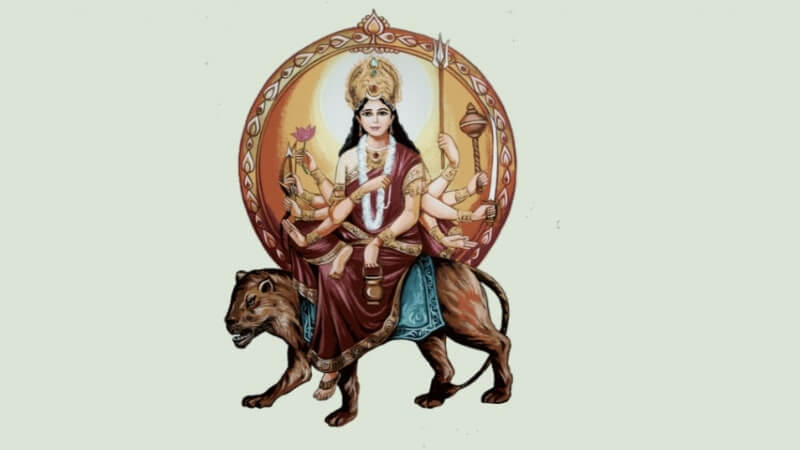
Goddess Chandraghanta is Durga’s third incarnation. She is shown as an angry, furious Goddess with ten arms. Navratri’s third day is dedicated to worshipping Chandraghanta. She is known as Chandraghanta by her followers because of her golden skin and crescent-shaped forehead tattoo. Scriptures claim that during a massive conflict between gods and demons, the sound waves from her ghanta (bell) killed a vast number of her evil foes. She is said to destroy all that is evil and wicked and rides a lion. When milk, sweets, or kheer are presented, the fierce Goddess is gratified.
Goddess Kushmanda
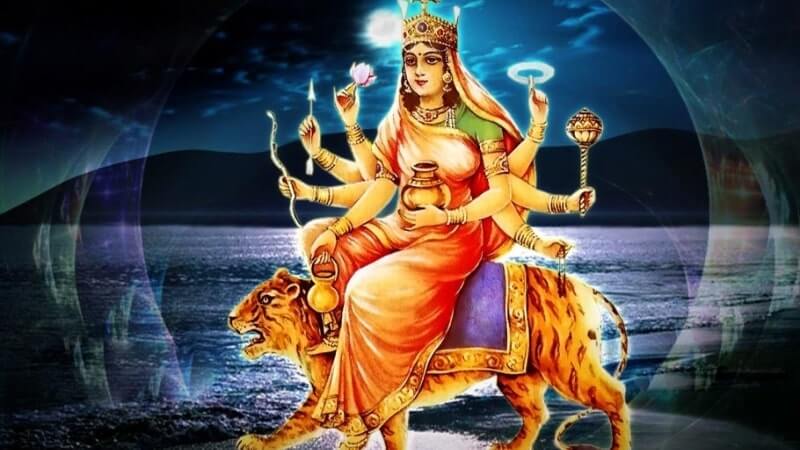
The devotion of Goddess Kushmanda takes place on Navratri’s fourth day. ‘Ku’ (small), ‘Ushma’ (warmth or energy), and ‘Anda’ (cosmic egg) are also part of the term Kushmanda, which refers to the “Little Cosmic Egg” that was responsible for the universe’s creation. Hindu mythology holds that the cosmos was once a gloomy place and that Goddess Kushmanda’s smile generated the Cosmic Egg. In order to honor the Goddess, devotees observe fasts and give Malpua as bhog.
Goddess Skandmata
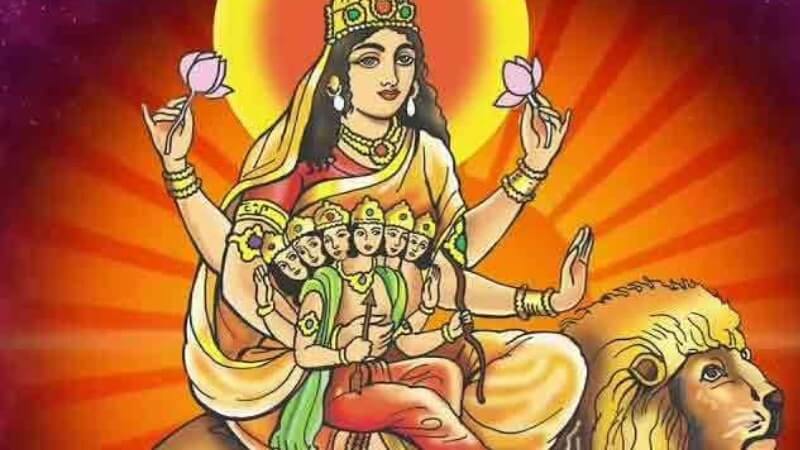
On the fifth day of Navratri, also known as Panchami, Skandmata, Durga’s fifth manifestation, is worshipped. Goddess Skandamata is shown as a four-armed deity with a bell, a kamandalu, and a lotus in each of her arms. Additionally, she is seen sitting Kartikay on her lap.
The goddess is known as Skandamata because Kartikay is also referred to as Skanda. She stands straight and tranquil. She is riding a lion, yet she is also sitting on a lotus. It is believed that offering the goddess a bhog of bananas will keep the followers healthy.
Goddess Katyayani
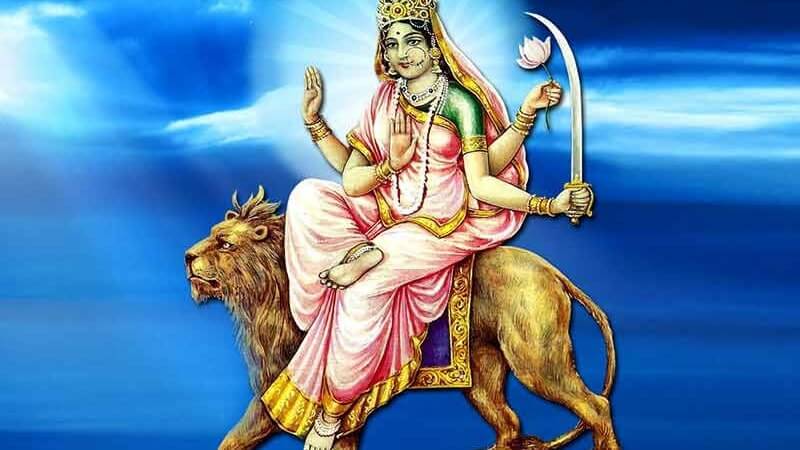
Goddess Katyayani, a manifestation of Shakti, is worshipped on Shashti or Navratris’s sixth day and is portrayed as having four arms and a sword.
In order to destroy the buffalo monster Mahishasura, Goddess Durga assumed the shape of Katyayani. Goddess Katyayani, a warrior embodiment of Goddess Parvati, is particularly ferocious because the demon was destroyed as a result of her vengeance. She can be satisfied with genuine piety and devotion and rides a lion. She is Sage Katyayan’s daughter. Honey is offered to Goddess Katyayani by devotees as prasad. Their lives are made sweeter by her blessings, which also assist them in overcoming difficult situations.
Goddess Kaalratri
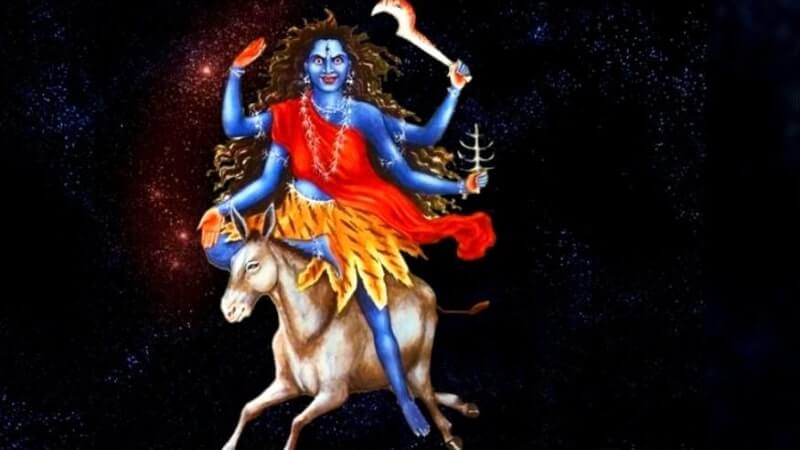
On the seventh day of Navratris, people worship the goddess Kaalratri. Goddess Kaalratri is depicted in Hindu scriptures as a four-armed divinity who travels on a donkey. She carries a trident, a noose, and a sword. She has a dark, fearsome visage and is Durga’s furious form. On her forehead, she has three eyes that are said to hold the cosmos. She exhales ferocious flames of fire and shines with dazzling beams. Devi’s this avatar is renowned for having dispatched the evil demons, Chand and Mund. Kaalratri, who appears fierce on the exterior, grants her devoted worshippers shelter from bad spirits and forces. Jaggery or sweets produced with jaggery are offered by worshippers. Along with Dakshina, Brahmins also receive the prasad.
Goddess Mahagauri
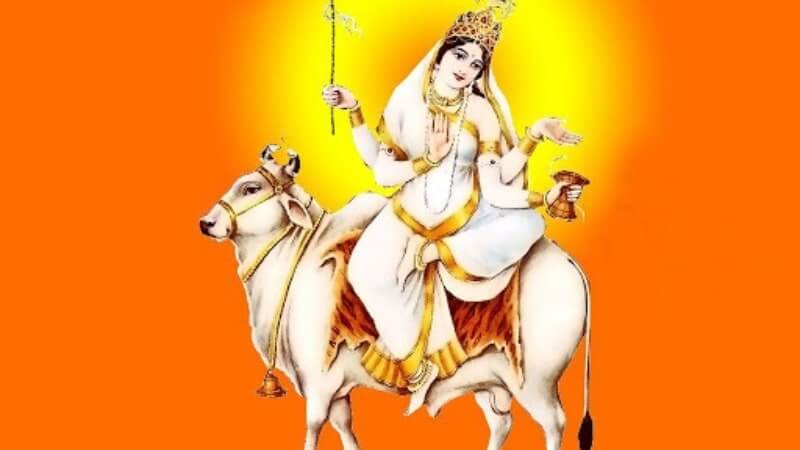
Mahagauri is honored on Durga Ashtami, the eighth day of Navratri. Mahagauri was revered as a four-armed god who rode a cow or a white elephant, according to the texts. She is carrying a damru and a Trishul. Parvati gave up all conveniences and resided in a jungle for intense meditation when she made the decision to go on an extreme devotion in order to conceive Deity Shiva as her consort. She persevered with her meditation for a number of years despite the scorching heat, coldness, rain, and horrible storms. As a result of her intense penance, Lord Shiva came in front of her and sprinkled pure Ganges water over her. All the filth was swept away by the Gangajal. She reclaimed her original attractiveness and adopted the name Mahagauri. Coconut is presented as bhog to Goddess Mahagauri by her followers. It is commonly accepted that giving coconuts to Brahmans on Ashtami will grant a child to a couple who are barren.
Goddess Siddhidatri
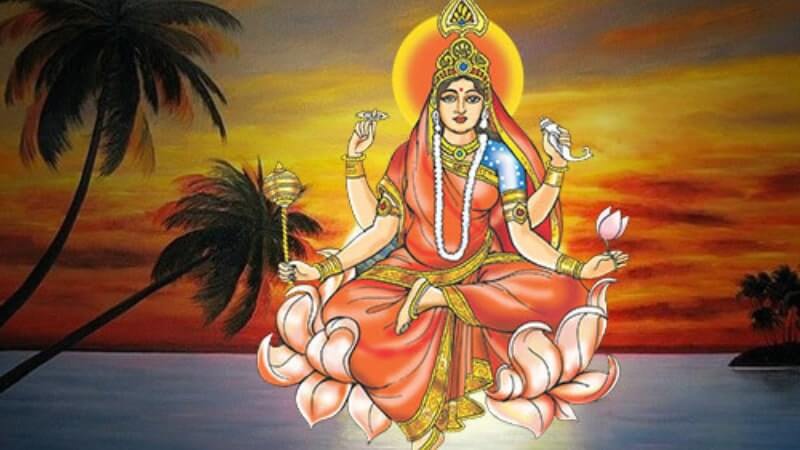
Goddess Siddhidhatri is portrayed as a four-armed deity who is serenely sitting on a lotus during the ninth day of worship. She also carries a book, discus, mace, and lotus. This manifestation of Shakti represents the triumph of wisdom and knowledge over ignorance. In Sanskrit, the word siddhi means success. Goddess Siddhidhatri represents perfection as a result. Devotees keep a fast on the ninth day of Navratri and sesame seeds are presented as bhog. This is thought to shield the believer and his home from unfavorable occurrences.
Final Words
The nine-day celebration offers the opportunity to adore Maa Durga in all of her manifestations. You now know what to present to Maa Durga in her many avatars. Go and serve this bhog to them during these auspicious days to seek the blessings of the Devi.
Happy Navaratri !!











